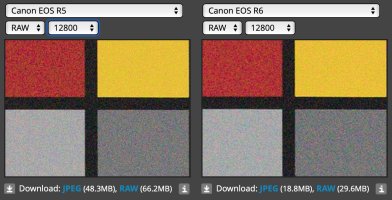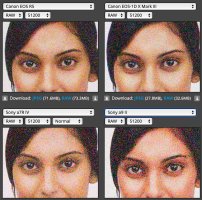Does the R5 keep the lens stopped down during the burst? Many lenses can't open/close the aperture fast enough to f/22 for 8-10 fps much less 20. I'm wondering if Canon has improved aperture diaphragm performance or if they just keep the lens stopped down when light is sufficient for DPAF to work.To answer those criticisms about the R5 not being able to operate at 20 fps f/22 and on low battery charge, I did a quick burst this morning of some dogs running around as I was out walking looking for birds with the R5+100-500mm at 500mm. Here is a gif of 53 shots in 2.71sec = 19.6 shots/sec, at f/22, 1/1000s and 26% battery charge using electronic shutter. The white dog was tracked and in sharp focus throughout.
Upvote
0


